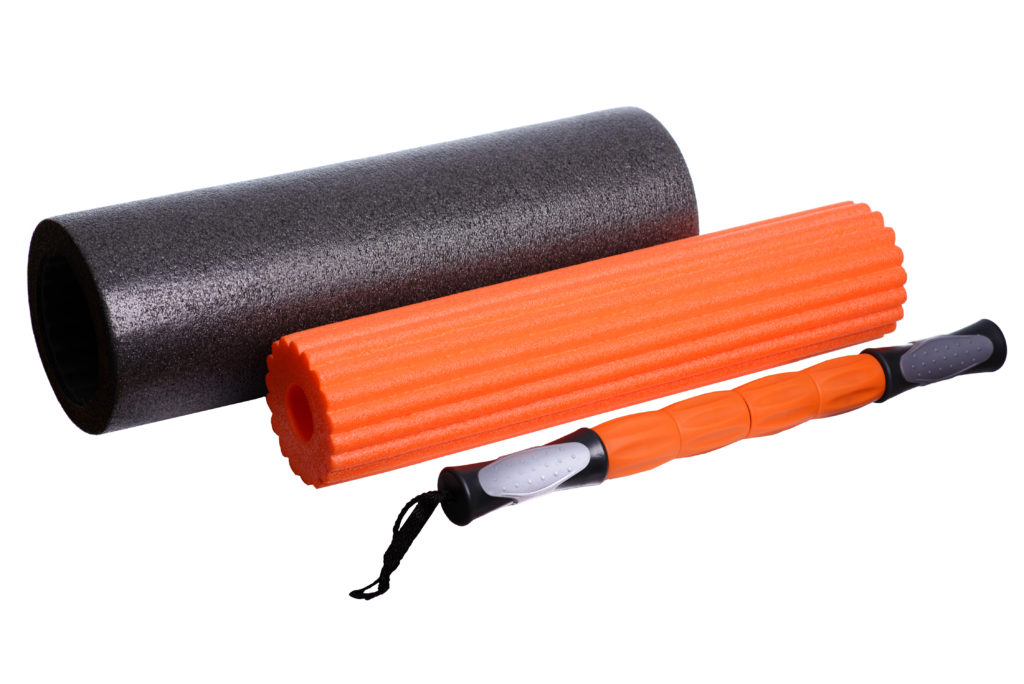How Foam Rolling Can Make You a Better Dancer
Foam rolling before and after class is basically the dancer version of a highly aspirational morning wellness routine. Both take serious discipline, and the benefits may not be obvious at first glance. But striving to be #ThatGirl only improves your aesthetic. Foam rolling on the regular can actually improve your dancing pretty much immediately. Here’s why you should get the massage ball rolling.
Meet Foam Roller: Your Muscles’ Best Friend
Technically a type of self-myofascial release (SMR), foam rolling’s benefits center on the nervous and muscular systems. SMR can be done with a handheld stick, a traditional foam roller, a massage ball or a vibrating massage gun, applying gentle pressure to tight muscles. This sends a cascade of signals through the body’s central nervous system, triggering muscle relaxation and maybe even pain reduction. (Say hello to your new weapon against DOMS, or delayed onset muscle soreness.)

According to Lauren McIntyre, ATC, a clinical specialist and emergency management liaison at NYU Langone’s Harkness Center for Dance Injuries, foam rolling can also improve your flexibility, range of motion and recovery by increasing blood flow to your muscles. “When we do excessive static stretching prior to exercise, we may see reduced muscle contraction power, which is not ideal for jumping,” she explains. “Foam rolling can help us gain the flexibility we need for dance without sacrificing muscular strength. It is also thought that self-release promotes circulation and can give us a sense of well-being and recovery.”
How to Let the Good Times Foam Roll
Just like with any other kind of warm-up method, intention is key. “The entire body is connected, so it may be beneficial to get in the habit of rolling a little bit, everywhere on the body,” explains McIntyre. “A restriction in one area could be impairing another, and some trigger points are not felt until you discover them through release work.” Your quads, hamstrings and calves are great places to start. You could also give attention to the upper body, especially your lats (latissimus dorsi), a large muscle that runs all the way across your mid-back to lower back. McIntyre recommends avoiding rolling out knots or very tight muscles until after you’re done dancing. You should also avoid rolling over major joints, like the hip socket.
When it comes to foam rolling, a little goes a long way. When you come across a tight muscle or knot, experts recommend pausing over that area for at least 30 and up to 90 seconds, but only if things feel OK. “If an area is increasing in pain after 30 seconds, it’s best to move away,” says McIntyre. “Likewise, if you’re doing a static hold and the area hasn’t released after that 90-second mark, you likely want to move away to avoid bruising.”
American Ballet Theatre soloist and personal trainer Roman Zhurbin recommends incorporating foam rolling into the beginning of your warm-up routine. He also suggests immediately following foam rolling with static and dynamic stretching. “Research has shown that incorporating all three into a warm-up can increase performance,” he explains. Zhurbin has one more foam roller trick up his sleeve: core activation. While you’re warming up, try using the foam roller to challenge your stability in a high plank, or lie down on your back holding the foam roller between your hands and knees, and slowly alternate lowering your limbs to activate your deep core muscles.

The Fine Print
Foam rolling is not a cure-all, and it’s not for every dancer. Per McIntyre: “Don’t use SMR as a way to avoid seeking medical care.” Dancers should also avoid rolling out areas of the body that have been recently injured, are swelling or fractured, or have open wounds. Additionally, dancers with certain medical conditions may want to avoid foam rolling altogether. If that’s you, opt for other recovery methods. “Reach out to your primary care physician if you have concerns about the safety of foam rolling,” McIntyre says.




